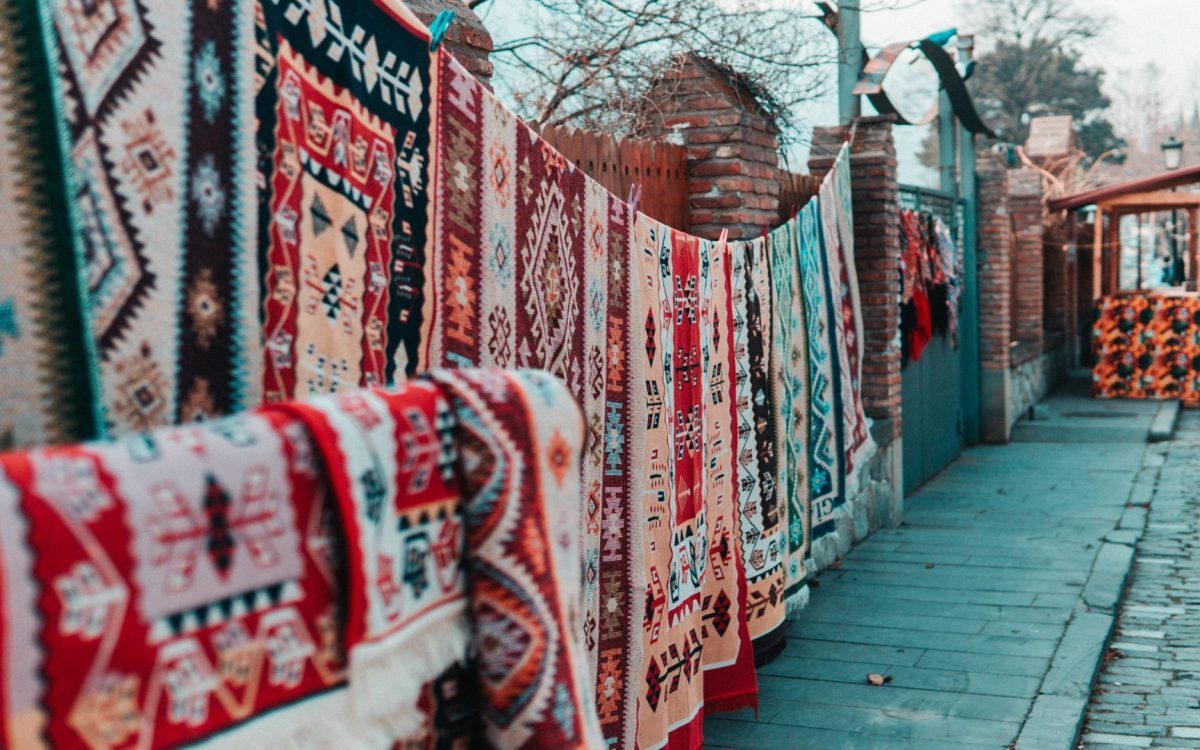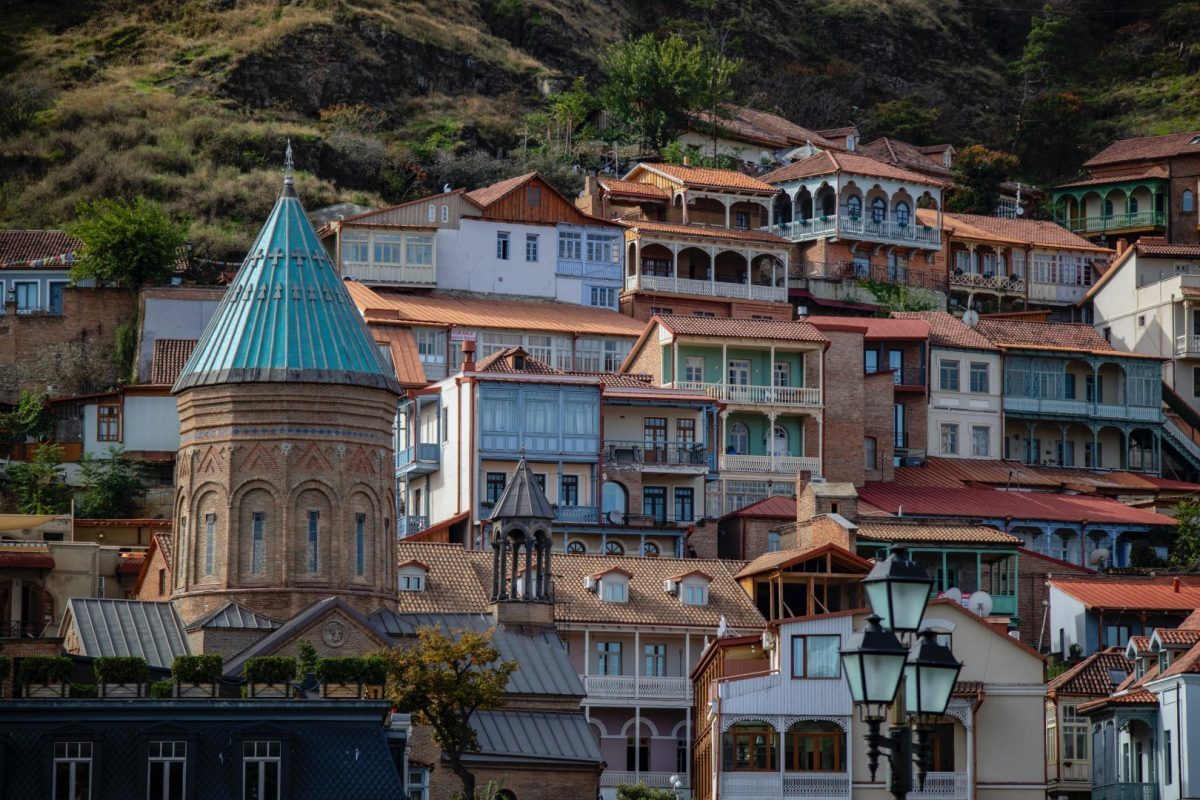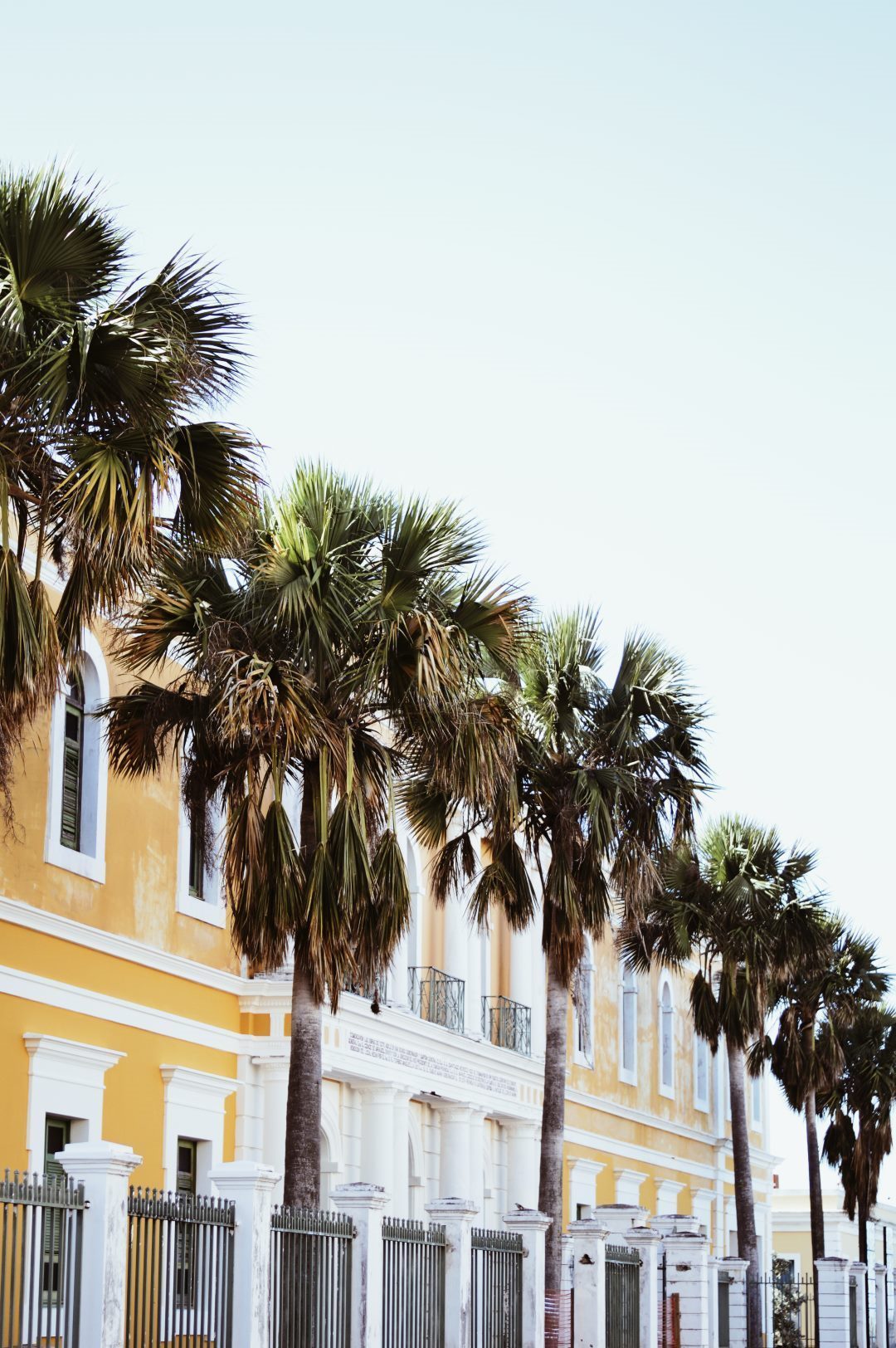Tbilisi: Guided Mtskheta, Gori, and Uplistsikhe Tour – How to Plan Your Tour
Are you planning a trip to Tbilisi and want to explore some of the cultural and historical gems of Georgia? Look no further than the Guided Mtskheta, Gori, and Uplistsikhe Tour. This tour offers a full day of sightseeing, learning, and exploration, and is the perfect way to immerse yourself in the rich history and culture of this beautiful country. In this post, we’ll break down everything you need to know about planning your Tbilisi tour.Experience
The Guided Mtskheta, Gori, and Uplistsikhe Tour offers a jam-packed itinerary with a variety of experiences. Some of the highlights include:Explore the 6th-century Jvari Monastery
Your first stop will be at the stunning 6th-century Jvari Monastery, located just 19 kilometers away from Tbilisi. Here, you’ll learn about the history and significance of this ancient monastery, and enjoy the breathtaking panoramic views of the Aragvi and Mtkvari rivers, the Armazi Mountains, and the city of Mtskheta.See the 11th-century Svetitskhoveli Cathedral
Next up, you’ll visit the 11th-century Svetitskhoveli Cathedral, located in the heart of Mtskheta. This UNESCO World Heritage Site is known for its beautiful architecture, intricate stone carvings, and rich cultural history.Tour through the 3 areas of Joseph Stalin’s Museum
After visiting Mtskheta, you’ll head 88 kilometers west of Tbilisi to the city of Gori. This is the birthplace of Soviet leader Joseph Stalin, and it is here that you’ll tour through the three areas of the Joseph Stalin Museum. This museum offers a fascinating insight into the life and legacy of this controversial figure.Witness the Uplistsikhe Caves
The final stop on your tour is at the ancient Uplistsikhe caves, located 10 kilometers east of Gori. This cave city dates back to the 6th century BC and was once a bustling center of commerce and culture. Today, it is a popular tourist destination and a fascinating glimpse into Georgia’s storied past.Full Description
Your tour will begin in the morning, with a pick-up from your hotel in Tbilisi. From there, you’ll embark on a scenic drive through the fertile lands of the Kartli region, enjoying the beautiful scenery and learning about the history and culture of the area. Your first stop will be at the Jvari Monastery, where you’ll receive an introductory story of the area and take in the stunning panoramic views. From there, you’ll continue on to the city of Mtskheta to visit the Svetitskhoveli Cathedral. After exploring Mtskheta, you’ll head to the city of Gori to tour through the three areas of the Joseph Stalin Museum, then enjoy a short walk around the area. Finally, you’ll witness the Uplistsikhe Caves before heading back to Tbilisi, where you’ll be dropped off at your hotel.How to Book
Booking your Guided Mtskheta, Gori, and Uplistsikhe Tour is easy – simply visit the tour page on GetYourGuide.com (book the tour here) and follow the instructions to select your preferred date and time. Don’t forget to bring your camera and comfortable shoes for walking!Tips for Your Tour
To make the most of your Guided Mtskheta, Gori, and Uplistsikhe Tour, here are some handy tips to keep in mind:Dress appropriately:
Be sure to dress in comfortable, weather-appropriate clothing, and wear comfortable shoes for walking.Bring a camera:
You won’t want to miss capturing the stunning views and fascinating historical sites along the way. Bring a camera or smartphone to snap photos and record the memories.Stay hydrated:
Be sure to bring along a bottle of water to stay hydrated throughout the day. You may also want to bring along some snacks for the journey.Listen to your guide:
Your tour guide will have a wealth of knowledge and insights into the areas you’ll be visiting. Be sure to listen carefully to their commentary and ask any questions that come to mind.Have fun:
Finally, don’t forget to have fun! The Guided Mtskheta, Gori, and Uplistsikhe Tour offers a unique and fascinating experience that you’re sure to remember for years to come.Book Your Tour Now
In conclusion, the Guided Mtskheta, Gori, and Uplistsikhe Tour is an excellent way to explore some of the most remarkable cultural and historical sites of Georgia. With a full day of sightseeing, learning, and exploration, this tour offers something for everyone. So go ahead and book your tour today (book the tour here) – you won’t be disappointed!
Frequently Asked Questions About Tbilisi
Tbilisi is the capital city of Georgia, situated in the eastern region of Europe. The city is known for its rich history, beautiful architecture, and natural scenic beauty. If you are planning to visit Tbilisi, you might have some questions in your mind. Here are some frequently asked questions about Tbilisi that might help you prepare for your visit:
1. What is the best time to visit Tbilisi?
The best time to visit Tbilisi is during the months of September to November and April to June. During these months, the weather is pleasant, with clear skies, and lower chances of rainfall. The temperature is perfect for outdoor activities, and the city is less crowded than during the peak summer season.
2. How to get around Tbilisi?
Tbilisi offers various options for transportation, such as buses, taxis, and metro. The metro is the quickest and cheapest way to get around the city. The buses are also a cheaper option, but they can be crowded during peak hours. Taxis are available throughout the city and offer a convenient and comfortable way to travel. Walking and cycling are also recommended, especially when exploring the old town areas.
3. What to see and do in Tbilisi?
Tbilisi has many tourist attractions and things to do, some of which include:
- Visit the old town and explore the narrow, cobbled streets and hidden courtyards.
- Take a cable car up to the Narikala Fortress and enjoy stunning views of the city from above.
- Visit the Holy Trinity Cathedral of Tbilisi, also known as Sameba, which is the main cathedral of the Georgian Orthodox Church.
- Explore the Georgian National Museum, which houses a vast collection of historical artifacts and exhibits from Georgia.
- Try traditional Georgian cuisine, such as khinkali, khachapuri, and shkmeruli, at local restaurants.
- Visit the famous sulfur baths in the old town, which are fed by Tbilisi’s naturally hot springs.
4. What is the currency used in Tbilisi?
The currency used in Tbilisi is the Georgian Lari (GEL). You can easily exchange your currency at banks, exchange offices, or ATMs throughout the city. Credit and debit cards are also widely accepted, especially in tourist areas.
5. What are the visa requirements for visiting Tbilisi?
Visitors from most countries, including the USA, EU, and Canada, do not require a visa to enter Georgia for up to 365 days. However, it is always recommended to check the visa requirements before traveling to Tbilisi.
6. What is the official language of Tbilisi?
The official language of Tbilisi is Georgian, which has its own unique writing system and is spoken by the majority of the population. However, English and Russian are also widely spoken, especially in tourist areas.
7. What is the climate like in Tbilisi?
Tbilisi has a humid subtropical climate, with hot summers and mild winters. The average temperature in summer (June to August) ranges from 24°C to 32°C, while in winter (December to February), the temperature can go as low as -2°C. Tbilisi also receives significant rainfall throughout the year, with the wettest months being May and June.
8. Is Tbilisi safe for tourists?
Tbilisi is generally considered a safe city for tourists. However, as with any other city, visitors must take precautions such as avoiding isolated areas at night, keeping valuables safe, and being aware of pickpockets in crowded areas. It is always recommended to stay aware of your surroundings and take necessary safety measures.
9. What are some cultural norms and customs in Tbilisi?
Georgia has a rich cultural history, and visitors are expected to respect local customs and norms. Some of these include:
- Greetings are important in Georgian culture, and a firm handshake and direct eye contact are considered respectful.
- Georgians are known for their hospitality, and it is common for hosts to offer food and drinks to guests.
- Dress modestly, especially when visiting religious sites.
- It is customary to remove shoes before entering someone’s home or a religious site.
10. What are some popular souvenirs to buy in Tbilisi?
Tbilisi offers a wide variety of souvenirs that reflect the country’s rich cultural heritage. Some of the popular souvenirs include:
- Wine and spirits, which are produced locally and popular with tourists.
- Handcrafted jewelry and accessories made from precious stones and metals.
- Traditional clothing, such as chokhas and papakhas (sheepskin hats).
- Handmade dolls, ceramics, and textiles.
Book Your Tour Now
Tbilisi is a beautiful city with a rich history, stunning architecture, and a vibrant cultural scene. With the help of this FAQ, you now have a better understanding of what to expect when visiting Tbilisi. Remember to take necessary safety precautions and respect local customs, and you are sure to have a memorable and enjoyable visit.

How to Spend Your Time as a Tourist in Tbilisi
Tbilisi, the capital city of Georgia, is a beautiful city that has many attractions for tourists. It is a perfect destination for travelers who enjoy exploring historic sites, trying delicious food, and experiencing a vibrant culture. Whether you are planning a short or an extended stay, there are plenty of things to do and see in Tbilisi. In this blog post, we will guide you on how to spend your time as a tourist in Tbilisi so that you can make the best of your visit.1. Old Town Tbilisi
One of the top destinations in Tbilisi is the Old Town. It is located on the banks of the Kura River and has a rich history dating back to the 4th century. The Old Town is home to several historic sites, including the Narikala Fortress, the Metekhi Church, and the Sioni Cathedral.Narikala Fortress
Narikala Fortress is a must-visit attraction in Tbilisi. It is a 4th-century fortress that offers breathtaking views of the city. The fortress is easily accessible by a cable car that takes you from the Old Town to the top of the hill.Metekhi Church
Metekhi Church is another historic site that you should not miss in Tbilisi. The church was built in the 13th century and is located on the rocky edge of the Kura River. It offers panoramic views of the city and is a great place to take photos.Sioni Cathedral
The Sioni Cathedral is one of the oldest churches in Tbilisi. It was initially built in the 6th century and has undergone several reconstructions over the years. It is located in the heart of the Old Town and is easily accessible.2. Rustaveli Avenue
Rustaveli Avenue is a vibrant street located in the heart of Tbilisi. It is one of the busiest streets in the city and has many attractions for visitors. The avenue is lined with cafes, restaurants, and shops, and it is a great place to explore the city’s culture and history.Tbilisi Opera and Ballet Theatre
The Tbilisi Opera and Ballet Theatre is one of the top attractions on Rustaveli Avenue. It is a stunning building that hosts many concerts and performances throughout the year. The theatre also offers guided tours, which provide an excellent opportunity to learn about its history and architecture.Tbilisi State Museum of Theatre, Music, Cinema, and Choreography
The Tbilisi State Museum of Theatre, Music, Cinema, and Choreography is another top attraction on Rustaveli Avenue. It is a must-visit destination for art lovers and has an extensive collection of costumes, props, and photographs from various performances.3. Sulphur Baths
Tbilisi is famous for its sulphur baths, which are believed to have healing properties. These baths have been used for centuries and are still popular among tourists and locals alike. There are several sulphur baths located in the Old Town area, and they offer a refreshing and relaxing experience.Abanotubani
Abanotubani is a district in the Old Town area that is famous for its sulphur baths. It is home to several historic bathhouses, including the Chreli Abano, Gulo’s Bath, and Royal Bath. These bathhouses offer a unique and traditional experience that you should not miss in Tbilisi.4. Georgian Cuisine
Georgian cuisine is one of the main highlights of Tbilisi. It is a diverse and flavorful cuisine that has become very popular around the world. There are several restaurants and cafes in Tbilisi where you can try traditional Georgian dishes.Khinkali
Khinkali is a traditional Georgian dumpling that is filled with meat, cheese, or vegetables. It is a popular dish in Tbilisi, and there are several restaurants that specialize in making Khinkali. Make sure to try this delicious dish during your stay in Tbilisi.Khachapuri
Khachapuri is another popular Georgian dish that you should try in Tbilisi. It is a cheese-filled bread that is often served with butter and eggs. There are several variations of Khachapuri, and each region in Georgia has its own unique recipe.Book Your Tour Now
Tbilisi is a beautiful city that has a lot to offer for tourists. From historic sites to delicious cuisine, there are plenty of things to keep you entertained during your visit. Make sure to explore the Old Town, walk along Rustaveli Avenue, and try traditional Georgian dishes. With this guide, you are ready to spend your time as a tourist in Tbilisi.Table of Contents

